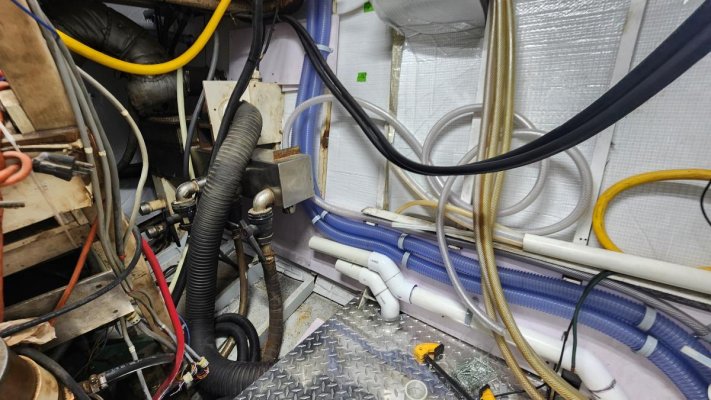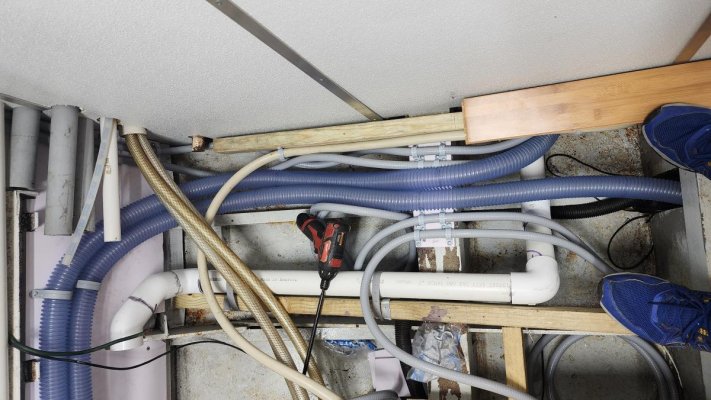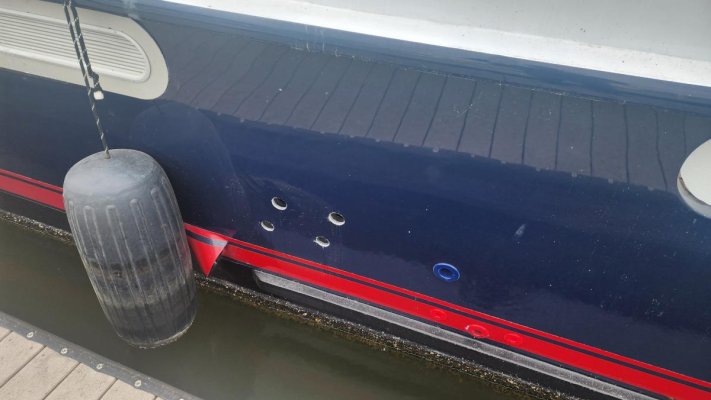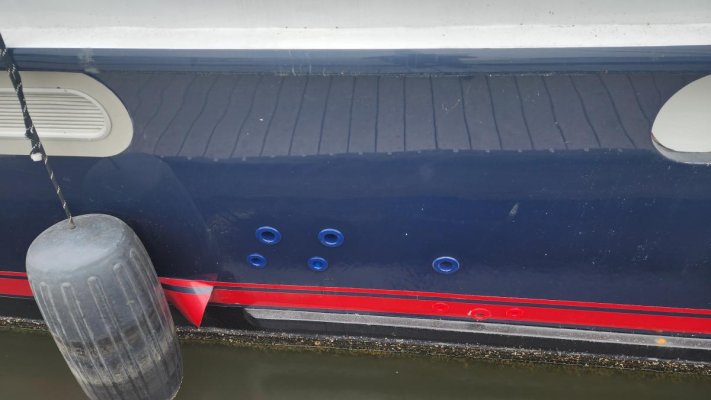NO NO NO Just NO
The weight of the water in a 3/4 " hose is .19 bs per vertical foot
The weight of water in a 1.5" hose/pipe is .77 lb per foot.
That is 4 TIMES the back pressure. So you thought of a larger pipe Not to kill pump capacity, will do just that!
So , If you are using check valves, sometimes needed to stop cycling , the large pvc capacity my overwhelm the pump output and not allow to open the valve and discharge due to the 4 TIMES head pressure.
If no check valve is used you will have a larger capacity ( the same 4 x) of water trapped in the discharge pipe that cannot be pumped overboard. . This will create a higher possibility of cycling the pump due to the backwash of 4x the water not discharged. You will have more 4x water in the bilge as compared to the smaller discharge hose.at all times due to the back flow of the discharge pipe.
Keep the discharge runs as short as possible. Minimize the discharge to the pump discharge,
Again Pumping into a larger pipe will decrease the flow due to the 4 x increased head pressure of the water and give you a 4x higher backwash affect. .
Simple math the bigger the pipe the bigger the back pressure and volume.
Here is a chart.
Pipes with Water Content - Weight and Volume






